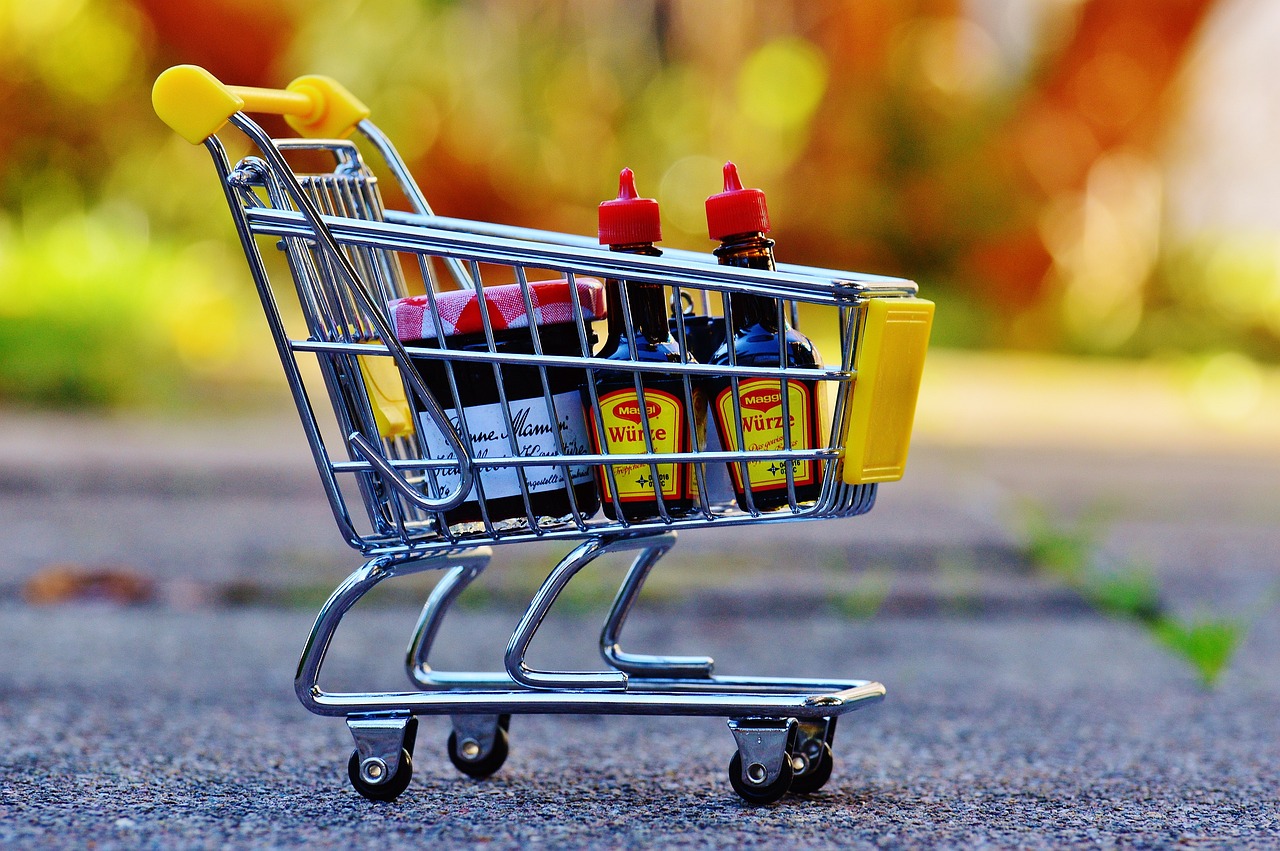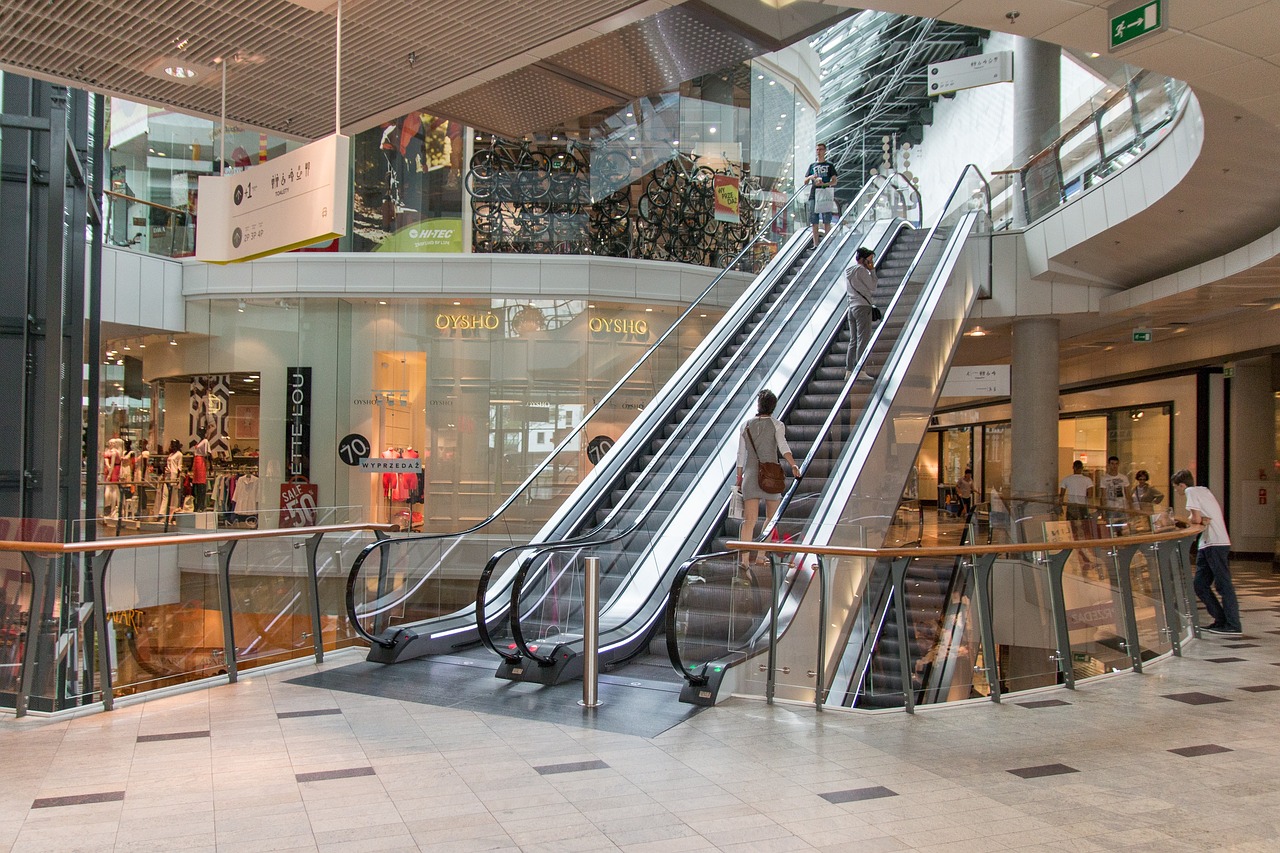The Environmental Impact of Online vs In-store Shopping
In today's fast-paced world, the way we shop has drastically changed. With the rise of online shopping, many consumers are left pondering the ecological consequences of their purchasing choices. Are we doing our planet a favor by clicking "add to cart," or is the traditional in-store shopping experience more sustainable? This article dives deep into the environmental impacts of both shopping methods, examining critical factors like carbon footprints, packaging waste, and consumer behaviors. By the end, you'll be equipped with the knowledge to make informed decisions that align with your values and the health of our planet.
When we talk about carbon emissions, it’s essential to consider the entire journey of a product, from production to delivery. Online shopping typically involves a complex web of transportation logistics, including warehousing and last-mile delivery, which can contribute significantly to its carbon footprint. In contrast, in-store shopping often involves a single trip to the store, which might seem more straightforward. However, the environmental impact can vary widely based on factors such as:
- The distance to the store
- The mode of transportation used
- The energy efficiency of delivery vehicles
For example, a study found that an average online order can generate over 30% more emissions than purchasing in-store, especially when considering the multiple stops delivery trucks make. So, the next time you think about your shopping habits, consider the distance and the mode of transport involved.
The explosion of online shopping has led to an equally concerning rise in packaging waste. Every item that arrives at your doorstep is typically surrounded by layers of cardboard, plastic, and bubble wrap. This section delves into the types of materials commonly used in packaging and their long-term effects on the environment. Did you know that a staggering over 165 billion packages are shipped each year in the U.S. alone? That's a lot of waste!
When it comes to packaging, not all materials are created equal. Here’s a quick breakdown of common materials and their recyclability:
| Material | Recyclability | Environmental Impact |
|---|---|---|
| Cardboard | Generally recyclable | Biodegradable but can contribute to deforestation |
| Plastic | Varies; many types are not recyclable | Long-lasting pollution, harmful to wildlife |
| Bubble Wrap | Not recyclable | Contributes to landfill waste |
As consumers, understanding these materials can guide us toward making more eco-friendly choices. For instance, opting for products that use minimal packaging or choosing brands that prioritize sustainable materials can make a significant difference.
Another critical distinction lies between biodegradable and non-biodegradable packaging. Biodegradable materials break down naturally over time, reducing long-term waste. In contrast, non-biodegradable materials can linger in landfills for centuries, leaching harmful chemicals into the soil and waterways. By choosing biodegradable options, consumers can significantly lessen their environmental impact.
Despite the presence of recycling programs, many packaging materials still end up in landfills due to various challenges. These include:
- Lack of consumer awareness
- Inconsistent recycling guidelines
- Contamination of recyclable materials
Understanding these obstacles can empower consumers to take proactive steps in their recycling habits, ensuring that more materials are processed correctly.
Ultimately, our shopping habits significantly influence the environmental impact of both online and in-store shopping. Trends show that consumers are becoming increasingly aware of their ecological footprint, often opting for brands that prioritize sustainability. This shift in buying behavior can lead to a more significant demand for eco-friendly practices across the retail landscape.
Transportation is another critical factor in the environmental impact of shopping. The emissions from delivery services can be substantial, especially when compared to personal vehicle use for in-store shopping. For example, while a single delivery truck can serve multiple customers, individual car trips to the store can add up quickly.
The last-mile delivery phase is often the most carbon-intensive aspect of online shopping. This is where the product makes its final journey from a distribution center to your home. Strategies to mitigate these emissions include:
- Consolidating orders
- Choosing local delivery options
- Utilizing electric delivery vehicles
By being mindful of these options, consumers can help reduce the carbon footprint associated with their online purchases.
Using public transportation for in-store shopping can significantly cut down on emissions compared to driving alone. Public transit systems are generally more efficient, carrying many passengers at once and reducing the number of individual vehicles on the road. This not only lessens traffic congestion but also contributes to lower overall emissions.
The choice between online and in-store shopping also has implications for local economies. When consumers shop locally, they support small businesses and contribute to job creation within their communities. This, in turn, can have a positive impact on sustainability efforts, as local businesses often prioritize sustainable practices. In contrast, online shopping can lead to the decline of local shops, which can have a cascading effect on the economy and community.
Q: Is online shopping always worse for the environment?
A: Not necessarily. It depends on various factors, including the distance of delivery, the type of packaging used, and consumer behavior.
Q: How can I make my online shopping more sustainable?
A: You can choose brands that use eco-friendly packaging, consolidate your orders, and select local delivery options whenever possible.
Q: What are some eco-friendly alternatives to plastic packaging?
A: Consider brands that use biodegradable materials, recycled paper, or even reusable packaging solutions.

Carbon Footprint Comparison
When it comes to shopping, many of us don’t think twice about how our choices affect the environment. However, understanding the carbon footprint associated with both online and in-store shopping is crucial for making informed decisions. The reality is that the environmental impact of these two shopping methods can be quite different, and it all boils down to a few key factors: transportation, energy usage, and the overall lifecycle emissions of products.
Let’s break it down. When you shop in-store, you typically drive to the store, which contributes to carbon emissions. On average, a personal vehicle emits about 404 grams of CO2 per mile. If your favorite store is 10 miles away, that’s a whopping 4,040 grams of CO2 just for the round trip! Now, consider the fact that many people might make similar trips multiple times a week. The emissions can quickly add up.
On the flip side, online shopping might seem like a greener option, especially when you consider that you’re not driving to a store. However, the reality is a bit more complex. Online retailers often rely on delivery services that use large trucks to transport goods, which can lead to significant emissions. According to a study, the average delivery truck emits about 1,800 grams of CO2 per mile. This means that while you may not be driving, the emissions from delivering your package can be substantial, especially if the truck is making multiple stops to deliver various packages.
To put this into perspective, let’s consider a simple comparison table:
| Shopping Method | Average CO2 Emissions (per trip) |
|---|---|
| In-store Shopping (10 miles round trip) | 4,040 grams |
| Online Shopping (Delivery of a single package) | 1,800 grams (per mile, varies by distance) |
As you can see from the table, while in-store shopping has a high upfront emission due to the distance traveled, online shopping can still contribute significantly to carbon emissions, especially with the last-mile delivery. Furthermore, the energy used in warehouses and data centers to process online orders also adds to the overall carbon footprint. Did you know that data centers alone consume about 1% of the world's energy? That's a staggering statistic that highlights the hidden costs of online shopping.
Ultimately, the choice between online and in-store shopping isn't as clear-cut as it may seem. Factors like distance, delivery methods, and energy consumption all play a role in determining the carbon footprint of your shopping habits. As consumers, we have the power to make choices that can either help or harm the environment. Next time you’re about to hit that “buy now” button, consider how that decision might ripple through the ecosystem.
In conclusion, understanding the carbon footprint comparison between online and in-store shopping is essential for making eco-conscious decisions. Whether you choose to shop online or in-store, being aware of the environmental impact can guide you toward more sustainable practices.

Packaging Waste Issues
The rise of online shopping has revolutionized the way we purchase goods, but it has also led to a significant increase in packaging waste. Every time we click "buy," we often forget about the aftermath: boxes, bubble wrap, and plastic fillers piling up. In fact, it's estimated that the United States alone generates around 30 million tons of packaging waste each year. This staggering number raises an important question: what happens to all this waste? The environmental consequences are profound, affecting not just our landfills but also our oceans and wildlife.
When we think about packaging, we typically envision cardboard boxes and plastic wraps. However, the variety of materials used in packaging can greatly influence its environmental footprint. For instance, many online retailers opt for single-use plastics and non-recyclable materials to ensure their products arrive safely. This not only contributes to landfill overflow but also poses a serious threat to marine life when these materials end up in our oceans. In contrast, in-store shopping often involves less packaging, as items are typically placed directly into reusable bags. But does that mean in-store shopping is the better option? Not necessarily.
To truly understand the impact of packaging waste, we need to break down the types of materials commonly used in online shopping. Here’s a quick overview:
| Packaging Material | Environmental Impact | Recyclability |
|---|---|---|
| Cardboard | Biodegradable, but often coated with plastic | Generally recyclable |
| Plastic Bubble Wrap | Non-biodegradable, contributes to ocean pollution | Not recyclable in most curbside programs |
| Polystyrene Foam | Non-biodegradable, harmful to wildlife | Not recyclable |
| Eco-friendly Alternatives | Biodegradable, less harmful to the environment | Often recyclable |
As consumers, we have the power to influence the market by choosing products that utilize sustainable packaging. This brings us to the crucial distinction between biodegradable and non-biodegradable materials. Biodegradable packaging breaks down naturally over time, reducing its long-term environmental impact. In contrast, non-biodegradable materials can persist in the environment for hundreds of years, contributing to pollution and habitat destruction.
However, even with the increasing availability of recycling programs, many packaging materials still end up in landfills. This leads us to the challenges of recycling. One major issue is that not all packaging is accepted in curbside recycling programs. For instance, plastic films and certain types of foams are often excluded, which creates confusion for consumers trying to recycle responsibly. Moreover, contamination—when non-recyclable materials mix with recyclables—can render entire batches of recyclables useless. This is a significant hurdle that needs to be addressed if we want to improve our recycling rates.
In conclusion, while online shopping offers convenience, it also comes with a hefty environmental price tag due to packaging waste. By being mindful of the materials we choose and advocating for better packaging practices, we can help mitigate these issues. The next time you order online, consider the packaging that will accompany your purchase. Are there more sustainable options available? Can you choose to shop locally instead? These small changes can lead to a big impact.
- What is the biggest contributor to packaging waste? The biggest contributors are often single-use plastics and non-recyclable materials used in online shopping.
- Are all packaging materials recyclable? No, many materials like polystyrene foam and plastic films are not recyclable in curbside programs.
- How can I reduce packaging waste when shopping online? Look for retailers that use eco-friendly packaging or consider choosing in-store shopping when possible.

Types of Packaging Materials
When it comes to online shopping, the packaging materials used can have a profound impact on the environment. From the moment you click "buy," the journey of your product begins, and so does the journey of its packaging. Understanding the various types of packaging materials is essential for making eco-friendly choices. The most common materials include cardboard, plastic, and biodegradable options, each with its own environmental footprint.
Cardboard is one of the most widely used packaging materials, largely because it is recyclable and made from renewable resources. However, the production process can be energy-intensive. While cardboard can decompose naturally, the sustainability of this material is heavily influenced by how it is sourced. Sustainable forestry practices can mitigate some of the environmental effects, making it a better option when responsibly sourced.
On the other hand, plastic presents a more complex challenge. While it’s lightweight and durable, which reduces transportation emissions, its long-term environmental impact is severe. Most plastics are non-biodegradable and can take hundreds of years to break down. Even though recycling programs exist, the reality is that a significant portion of plastic packaging ends up in landfills or the ocean, causing harm to wildlife and ecosystems. To put it in perspective, here’s a quick comparison of the recyclability of common packaging materials:
| Material | Recyclable | Environmental Impact |
|---|---|---|
| Cardboard | Yes | Lower impact when sourced sustainably |
| Plastic | Partially | High impact, contributes to pollution |
| Biodegradable | Yes | Lower impact, but requires proper disposal |
Lastly, biodegradable materials are gaining popularity as a more sustainable alternative. These materials can break down naturally in the environment, reducing waste. However, it’s crucial to note that not all biodegradable packaging will decompose effectively in landfills, where conditions are often unsuitable for breakdown. Therefore, opting for biodegradable packaging is not a silver bullet; consumers must also consider the disposal methods available in their area.
In summary, the types of packaging materials used in online shopping present a mixed bag of environmental implications. Making informed choices about packaging can significantly influence the ecological impact of our shopping habits. So next time you receive a package, take a moment to consider the material it’s wrapped in. Your choices matter!

Biodegradable vs. Non-biodegradable
When it comes to shopping, the packaging choices we make can have a profound impact on the environment. Understanding the difference between biodegradable and non-biodegradable materials is essential for consumers who want to make eco-friendly decisions. Biodegradable materials are designed to break down naturally over time, returning to the earth without leaving harmful residues. On the other hand, non-biodegradable materials, such as plastics, can persist in the environment for hundreds of years, contributing to pollution and harming wildlife.
One of the most significant advantages of biodegradable packaging is its ability to decompose under the right conditions. For instance, materials like paper, cardboard, and certain bioplastics can break down into organic matter when exposed to moisture and microorganisms. This process not only reduces waste in landfills but also enriches the soil, promoting a healthier ecosystem. In contrast, non-biodegradable materials often end up in landfills or oceans, where they can cause significant harm to marine life and ecosystems.
However, it’s crucial to note that not all biodegradable materials are created equal. Some require specific conditions to decompose, such as industrial composting facilities, which are not widely available. Therefore, while biodegradable options are generally better for the environment, consumers must ensure they are disposed of correctly to maximize their benefits.
To illustrate the differences more clearly, consider the following table:
| Feature | Biodegradable | Non-biodegradable |
|---|---|---|
| Decomposition Time | Weeks to a few months | Hundreds to thousands of years |
| Environmental Impact | Minimal, returns nutrients to soil | High, contributes to pollution |
| Recycling | Can often be composted | Generally not recyclable |
| Examples | Paper, corn starch, certain bioplastics | Plastic, Styrofoam, glass |
As consumers, our choices matter. By opting for biodegradable packaging when available, we can significantly reduce our environmental footprint. It’s like choosing to plant a tree instead of cutting one down; the benefits extend beyond our immediate needs and contribute to a healthier planet for future generations. So next time you’re shopping, take a moment to consider the packaging and its impact on the world around you.

Recycling Challenges
When it comes to recycling, both online and in-store shopping present their own unique set of challenges. Despite the increasing awareness of environmental issues, many consumers are still unaware of the complexities involved in recycling packaging materials. One of the main hurdles is the lack of standardization in recycling programs across different regions. This inconsistency often leads to confusion about what can and cannot be recycled. For instance, while some municipalities accept certain types of plastics, others may not, leaving consumers unsure about how to dispose of their packaging responsibly.
Moreover, the materials used in packaging can complicate the recycling process. Many online retailers use a mix of materials, such as cardboard, plastic, and bubble wrap, which can be difficult to separate for recycling. As a result, a significant portion of this waste ends up in landfills. According to recent studies, approximately 30% of recyclable materials are incorrectly disposed of, which not only wastes resources but also increases the overall environmental burden.
Another significant challenge lies in the contamination of recyclable materials. When food waste or other contaminants are mixed with recyclable items, it can render entire batches of materials unrecyclable. This situation is particularly common with packaging that has been used for food delivery, where greasy pizza boxes or takeout containers are often thrown into recycling bins, leading to further complications in the recycling process.
To illustrate the recycling challenges, consider the following table that highlights the most common packaging materials along with their recyclability and typical contamination issues:
| Packaging Material | Recyclability | Common Contamination Issues |
|---|---|---|
| Cardboard | Yes | Food residue, moisture |
| Plastic (Types 1 & 2) | Yes | Food waste, mixed plastics |
| Plastic (Types 3-7) | Varies | Mixed materials, contamination |
| Bubble Wrap | No | N/A |
| Styrofoam | No | N/A |
In addition to these challenges, the lack of consumer education plays a crucial role in the effectiveness of recycling efforts. Many individuals are simply unaware of the proper recycling protocols or the importance of cleaning their recyclables before disposal. This gap in knowledge can lead to increased contamination rates and a decrease in the overall efficiency of recycling programs.
Ultimately, addressing these recycling challenges requires a collaborative effort from consumers, retailers, and local governments. By promoting better education around recycling practices and investing in more efficient recycling technologies, we can significantly reduce the environmental impact of both online and in-store shopping.
- What types of packaging are most commonly recycled? Cardboard and certain types of plastics (like PET and HDPE) are widely accepted for recycling.
- How can I ensure my recyclables are accepted? Always check your local recycling guidelines and clean your recyclables before disposal.
- What happens to contaminated recyclables? Contaminated items often end up in landfills, as they can spoil entire batches of recyclables.
- Are there alternatives to traditional packaging? Yes, many companies are now using biodegradable and compostable materials as alternatives to conventional packaging.

Consumer Behavior Trends
When it comes to shopping, consumer behavior plays a pivotal role in shaping the environmental impact of both online and in-store purchases. Understanding these trends can help us make more informed and sustainable choices. One of the most striking trends is the shift towards convenience. Many consumers are opting for the ease of online shopping, which allows them to browse and purchase from the comfort of their homes. However, this convenience often comes with hidden costs, particularly in terms of environmental sustainability. Have you ever thought about how your shopping habits contribute to the bigger picture?
Moreover, the rise of instant gratification has led to an increase in impulse purchases, especially online. The thrill of clicking a button and having a product delivered to your doorstep can be exciting, but it also leads to a higher volume of goods being shipped, which in turn increases carbon emissions. For instance, a recent study showed that online shoppers are more likely to buy items they don’t need, resulting in a staggering amount of waste. This behavior can be likened to a double-edged sword: while we enjoy the benefits of technology, we also have to face the environmental repercussions.
Another trend to consider is the growing awareness of sustainability among consumers. More people are now actively seeking out eco-friendly products and brands that prioritize sustainability in their operations. This shift in consumer preferences is encouraging businesses to adopt greener practices, from using sustainable materials to implementing energy-efficient processes. For example, many companies now highlight their commitment to reducing their carbon footprint in their marketing efforts, which resonates with environmentally conscious shoppers.
Interestingly, a survey conducted by a leading market research firm revealed that 70% of consumers are willing to pay more for products from sustainable brands. This indicates a significant shift in consumer priorities, where being eco-friendly is becoming a key factor in purchasing decisions. However, despite this growing trend, there is still a considerable gap between intention and action. Many consumers may express a desire to shop sustainably, but when faced with the convenience of online shopping, they often revert to their old habits.
To further understand these trends, let’s take a look at some key factors influencing consumer behavior:
- Convenience vs. Sustainability: The ease of online shopping often overshadows the importance of making environmentally friendly choices.
- Awareness and Education: Increased knowledge about the environmental impact of shopping can lead to more responsible consumer behavior.
- Brand Loyalty: Consumers are increasingly loyal to brands that demonstrate a commitment to sustainability, which can influence their shopping choices.
Ultimately, the way we shop reflects our values and priorities. As consumers, we have the power to drive change by supporting brands that align with our commitment to sustainability. By being mindful of our purchasing decisions, we can contribute to a healthier planet while still enjoying the benefits of shopping, whether online or in-store. So, next time you're about to make a purchase, ask yourself: is this choice truly sustainable?
Q: Does online shopping always have a larger carbon footprint than in-store shopping?
A: Not necessarily. While online shopping can lead to higher transportation emissions, factors such as delivery efficiency and consumer behavior also play significant roles in determining the overall carbon footprint.
Q: What can I do to reduce my environmental impact when shopping online?
A: Consider consolidating your orders to minimize shipping trips, choosing eco-friendly packaging options, and supporting brands that prioritize sustainability.
Q: Are there any eco-friendly packaging materials I should look for?
A: Yes! Look for biodegradable materials, recycled paper, and brands that use minimal packaging. These options are generally better for the environment.

Transportation Emissions
Transportation plays a crucial role in the environmental impact of shopping, often acting as the silent yet significant contributor to our carbon footprints. When you think about it, every time you make a purchase, there's a hidden journey involved. For online shopping, products travel from warehouses to your doorstep, while in-store shopping involves your vehicle traveling to the store and back. But which method is more environmentally friendly? Let's break it down.
First off, the emissions from delivery services can be staggering. Consider the number of delivery trucks on the road, each making multiple stops to drop off packages. According to recent studies, the last-mile delivery phase, which is the final leg of the transportation journey, accounts for a whopping 53% of total delivery emissions. That's a huge chunk! These trucks often run on diesel, which contributes to air pollution and greenhouse gas emissions. In contrast, when you drive to a store, the emissions depend on your vehicle's efficiency and the distance you travel.
However, it’s not just about the type of shopping; it's also about how we choose to get to the store. If you’re driving alone in a gas-guzzling vehicle, the emissions can add up quickly. On the flip side, if you opt for public transportation, you can significantly reduce your carbon footprint. Public buses and trains can carry many passengers at once, spreading the emissions across a larger group. This means that, in many cases, taking public transport can be a much more sustainable choice than driving your own car.
To visualize the impact, let's consider a simple comparison:
| Shopping Method | Average Emissions per Trip (CO2 in kg) |
|---|---|
| Online Shopping (Last-Mile Delivery) | 1.5 - 2.5 kg |
| Driving Alone to Store | 1.0 - 3.0 kg |
| Public Transportation | 0.5 - 1.0 kg |
As you can see from the table, the choice of transportation method can greatly influence the emissions associated with shopping. So, what can we do to mitigate these emissions? Here are a few strategies:
- Consolidate your purchases: Instead of ordering multiple items separately, try to group them into one order to reduce the number of deliveries.
- Choose local stores: Shopping locally not only supports your community but also cuts down on transportation emissions.
- Utilize public transport: Whenever possible, opt for buses or trains to reduce your carbon footprint when shopping in-store.
Ultimately, the transportation emissions associated with both online and in-store shopping present unique challenges. By being aware of our choices and their impacts, we can make more informed decisions that contribute to a healthier planet. So, the next time you're about to click 'buy' or hop in your car, think about the journey that item will take and how you can make it a greener one!

Last-Mile Delivery Impact
When we talk about the environmental impact of online shopping, one of the biggest culprits is the last-mile delivery. This term refers to the final leg of the delivery process, where goods are transported from a distribution center to the customer's doorstep. It’s like the icing on a cake—essential, but often the most wasteful part. In fact, last-mile delivery can account for up to 28% of total transportation costs and significantly contribute to carbon emissions. Imagine a delivery truck making multiple stops, idling in traffic, and navigating through congested urban areas. Each of these factors adds to its carbon footprint, making it a major contributor to environmental degradation.
To put it into perspective, consider the following table that illustrates the average emissions for different delivery methods:
| Delivery Method | Average CO2 Emissions (grams per mile) |
|---|---|
| Standard Delivery Truck | 1,500 |
| Electric Delivery Van | 500 |
| Bicycle Courier | 0 |
As you can see, the type of vehicle used for last-mile delivery plays a crucial role in determining its environmental impact. With electric vans and bicycles emerging as viable alternatives, there’s hope for reducing emissions. However, the challenge lies in the logistics and infrastructure needed to support these greener options. Many cities are still heavily reliant on fossil fuel-powered delivery trucks, which exacerbates the problem.
Moreover, the frequency of deliveries has increased significantly with the rise of online shopping. Consumers often expect same-day or next-day delivery, which can lead to more trucks on the road, making unnecessary trips to fulfill these demands. This rush to deliver can also compromise the quality of service, as companies may prioritize speed over sustainability. It’s a classic case of wanting it all—convenience at the expense of the planet.
So, what can be done to mitigate the impact of last-mile delivery? Here are a few strategies that can help:
- Consolidation of Deliveries: Encourage consumers to opt for fewer, larger deliveries rather than multiple small ones. This can significantly reduce the number of trips needed.
- Utilizing Local Distribution Centers: Companies can set up local hubs to minimize the distance products need to travel to reach customers.
- Incentivizing Eco-Friendly Delivery Options: Offering discounts for choosing green delivery methods, like bicycle couriers or electric vehicles, can encourage more sustainable choices.
Ultimately, while online shopping offers convenience, we must consider the environmental toll of last-mile delivery. By being mindful of our choices and advocating for more sustainable practices, we can help reduce the negative impact of our shopping habits on the planet. It’s a delicate balance, but with collective effort, we can pave the way for a greener future.
- What is last-mile delivery? Last-mile delivery refers to the final step of the delivery process where goods are transported from a distribution center to the customer's home.
- How does last-mile delivery impact the environment? It contributes significantly to carbon emissions due to the number of vehicles on the road, traffic congestion, and inefficient delivery practices.
- What can consumers do to lessen the impact of last-mile delivery? Consumers can choose fewer, consolidated deliveries, support companies that use eco-friendly delivery methods, and be mindful of their purchasing habits.

Public Transportation vs. Car Usage
When it comes to the environmental impact of shopping, the mode of transportation we choose plays a critical role. Imagine this: you're driving alone to your favorite store, the engine purring, the air conditioning humming, and suddenly you realize that you’re not just picking up a new shirt; you're also contributing to carbon emissions. In contrast, consider hopping on a bus or train, sharing the ride with others, and reducing your individual carbon footprint. Sounds appealing, right?
Public transportation is often touted as a more sustainable option compared to personal vehicles. Why? Because it can significantly reduce the number of cars on the road, leading to fewer emissions and less traffic congestion. For instance, a bus can replace dozens of cars, which means less fuel consumption and lower greenhouse gas emissions per passenger. According to the American Public Transportation Association, public transit saves approximately 45 million metric tons of carbon dioxide annually. That’s like taking 9 million cars off the road!
However, the convenience of driving your own car comes with a price—both literally and environmentally. The average car emits about 404 grams of CO2 per mile. If you’re making a quick trip to the store, that might not seem like much, but consider the cumulative impact of thousands of shoppers doing the same thing. If everyone opted for public transportation, we could see a dramatic reduction in overall emissions.
Let’s break down some of the key differences between public transportation and car usage:
| Factor | Public Transportation | Car Usage |
|---|---|---|
| Carbon Emissions | Lower per passenger | Higher per passenger |
| Traffic Congestion | Reduces congestion | Contributes to congestion |
| Cost | Generally cheaper | Higher costs (fuel, maintenance) |
| Convenience | Limited by schedules | Flexible timing |
While public transportation has clear advantages in terms of environmental impact, it does come with its own set of challenges. For instance, schedules can be restrictive, and the routes may not always align with your destination. However, many cities are investing in expanding and improving their public transit systems to make them more user-friendly. Plus, with the rise of app-based services, finding the quickest route has never been easier!
Ultimately, the choice between public transportation and car usage boils down to personal preference and lifestyle. If you live in a city with robust public transit, it might make sense to leave the car at home and hop on a bus or train. On the other hand, if you live in a more rural area, driving might be your only realistic option. But remember, every little bit counts. Even if you can switch to public transport just once a week, you’re making a positive impact on the environment.
- Is public transportation really more eco-friendly than driving? Yes, public transportation typically has a lower carbon footprint per passenger compared to individual cars.
- What are the benefits of using public transportation? Benefits include reduced traffic congestion, lower emissions, and often lower travel costs.
- Are there any downsides to public transportation? Limitations can include fixed schedules and routes, which may not always be convenient for everyone.
- How can I encourage others to use public transportation? Share information about its benefits, advocate for better services, and lead by example!

Local Economy Effects
The choice between online and in-store shopping doesn't just impact our personal lives; it reverberates through the very fabric of our local economies. Every time you click 'add to cart' instead of strolling down your favorite shopping street, you're making a decision that can affect neighborhood businesses, job creation, and even community engagement. So, how do these shopping habits shape our local economies, and why should we care?
When consumers opt for online shopping, they often unknowingly contribute to a cycle that can undermine local businesses. Picture this: a small bookstore in your town that has been a community staple for years. Each time a resident chooses to purchase a book from a large online retailer instead of this local gem, the bookstore faces dwindling sales. This isn’t just about books; it extends to clothing stores, grocery shops, and artisan markets. The more consumers lean towards online platforms, the more local businesses struggle to survive, leading to closures and a loss of unique local culture.
Moreover, these closures don’t just impact the store owners. They ripple through the entire community. Local businesses are often significant employers, providing jobs to residents who may not find work elsewhere. When these businesses close, job opportunities vanish, leading to increased unemployment rates. To illustrate, consider the following table that highlights the potential job loss when local businesses close due to online shopping trends:
| Business Type | Average Employees | Impact of Closure |
|---|---|---|
| Local Bookstore | 5-10 | Loss of community gathering space and local jobs |
| Independent Coffee Shop | 10-15 | Loss of local jobs and unique meeting spots |
| Local Grocery Store | 20-30 | Increased food insecurity and loss of jobs |
Additionally, local businesses often contribute to the community in ways that online retailers cannot. They sponsor local events, support schools, and contribute to charitable causes. When these businesses thrive, they foster a sense of community and belonging. In contrast, the profits from online shopping often flow to distant corporations, leaving little to reinvest in the local area. Think about it: every dollar spent at a local business generates about 3.5 times the impact on the local economy compared to spending at a chain retailer. This is because local businesses tend to purchase from other local businesses, creating a robust economic ecosystem.
So, how can we make more conscious choices that favor our local economies? Here are some practical tips:
- Shop Local: Whenever possible, choose local stores over online giants.
- Support Local Events: Attend farmers' markets, craft fairs, and community events to help local vendors thrive.
- Spread the Word: Share your favorite local businesses on social media to help raise awareness.
In conclusion, our shopping habits extend far beyond personal convenience. By understanding the local economy effects of our choices, we can become more mindful consumers. Every purchase is a vote for the kind of community we want to live in. So the next time you’re about to hit that 'checkout' button online, take a moment to consider how your decision impacts your local economy and the vibrant community that surrounds you.
Q1: How does online shopping affect local businesses?
A1: Online shopping can lead to decreased sales for local businesses, which may result in closures and job losses in the community.
Q2: Why is supporting local businesses important?
A2: Local businesses contribute to the community by creating jobs, supporting local events, and keeping money circulating within the local economy.
Q3: What can I do to support my local economy?
A3: You can shop at local stores, attend community events, and promote local businesses through word-of-mouth and social media.
Frequently Asked Questions
- What is the carbon footprint of online shopping compared to in-store shopping?
The carbon footprint of online shopping can be higher due to transportation emissions from delivery services. However, in-store shopping also contributes to emissions, especially if consumers drive alone. The overall impact varies based on factors like distance, mode of transport, and delivery efficiency.
- How does packaging waste differ between online and in-store shopping?
Online shopping typically generates more packaging waste due to the need for protective materials during shipping. Common materials like plastic and cardboard can have long-term environmental effects if not disposed of properly. In-store shopping usually involves less packaging, but it can still contribute to waste, especially with single-use bags.
- What types of packaging materials are most environmentally friendly?
Biodegradable materials, such as plant-based plastics, are generally more eco-friendly as they break down naturally over time. In contrast, non-biodegradable materials like traditional plastics can persist in the environment for hundreds of years. Choosing products with minimal packaging or recyclable options can help reduce waste.
- Are there challenges with recycling packaging used in online shopping?
Yes, many packaging materials are not recycled effectively due to contamination or lack of recycling facilities. Even with available programs, a significant amount of packaging ends up in landfills. Consumers can help by properly sorting recyclables and supporting companies that prioritize sustainable packaging.
- How do consumer behavior trends impact environmental sustainability?
Consumer habits, such as the preference for convenience over sustainability, can significantly influence environmental outcomes. For instance, choosing to shop online for quick delivery may increase carbon emissions, while supporting local businesses through in-store shopping can boost the local economy and reduce transportation-related impacts.
- What are the transportation emissions associated with last-mile delivery?
Last-mile delivery is often the most carbon-intensive part of online shopping, as it involves multiple stops and routes to reach consumers. Strategies like using electric vehicles, optimizing delivery routes, and consolidating shipments can help mitigate these emissions and promote more sustainable practices.
- Is using public transportation for in-store shopping better for the environment?
Absolutely! Using public transportation can significantly reduce individual carbon emissions compared to driving alone. By opting for buses or trains, shoppers can lessen their environmental impact and contribute to a more sustainable urban ecosystem.
- How does shopping online affect local economies?
Online shopping can negatively impact local economies by diverting funds away from local businesses, which may struggle to compete with larger online retailers. This can lead to job losses and decreased community investment. Supporting local stores through in-store shopping helps boost the local economy and fosters a sense of community.



















